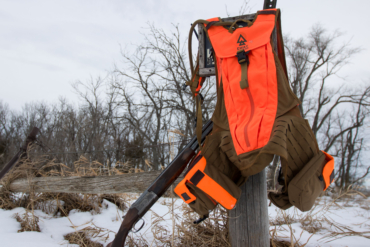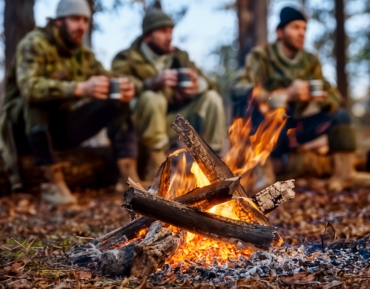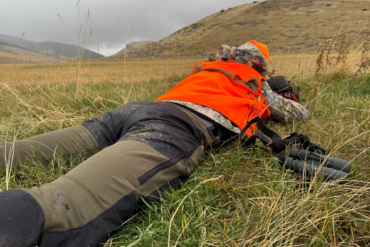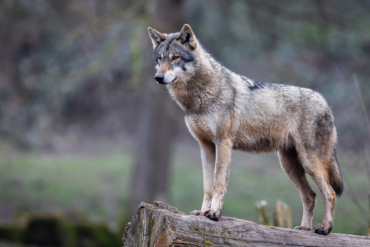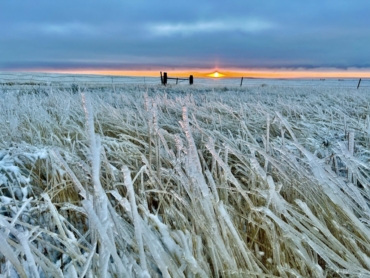Hunter and content creator Josh Kirchner takes an honest look into the evolving world of long-range bowhunting.
On a cold December morning, I sat up against a tree with my dad set up to my left and my first bow resting in my lap. There was ice forming between my hand and the bow, and my toes were numb.
What I wouldn’t give for a cup of hot chocolate right then. That feeling of the cold quickly went away, though, when I looked at the horizon.
A lone mule deer buck was coming our way. An old deer that had a white patch on his back. I could see his breath as he slowly sauntered toward us. That buck walked right by me at 10 yards and I never even picked up my bow.
It was my first bow hunt.
And, just like that moment showed me, bowhunting has always been a game of getting close. But, I’ll add that progression in both technology and shooting skill have begun to push the boundaries of what is normal — and even what’s ethical, for that matter.
So, in this piece, I’m going to dive into those advancements in technology and my overall thoughts on long-range bowhunting as a dedicated archery hunter. I’ll also go over how to determine your effective shooting range versus your effective hunting range.
What Is Long-Range Bowhunting?

The definition of long-range bowhunting is a variable one. What one hunter may consider long-range might not be long based on another’s personal abilities. My opinion is that there are two definitions of long-range bowhunting, the first being a personal one and the second being an overall one.
On a personal note, it’s whatever distance skirts your comfort zone. For most people, I’d say it’s anything past 60 yards with a compound bow. And though this article is talking directly about compound bows, a lot of the ideas can apply to any type of archery you’re shooting.
Evolution of Archery Equipment
As we have evolved into these hungry-for-instant-gratification types of folks, the evolution of our bowhunting equipment has followed suit. The following gear is made to make life easier out there. And though this is great, it’s still important to know limits. More on that soon.
Rangefinders
Having access to using a rangefinder that delivers exact yardages — not to mention angle compensation — is massive. The number of arrows spent at critters in the past that bit the dust due to not knowing ranges is laughable. I used to hear about guys heading into the mountains with multiple quivers of arrows for this very reason.
And knowing exact yardage really comes into play at a distance. The difference in impact points from 25 to 30 yards is quite minimal. However, the difference in impact points from 70 to 75 yards is substantial.
Rangefinders have no doubt made us more lethal bowhunters, but they’ve also allowed us to do so at a much greater distance than the archery hunters of old.
Bow Technology
Along with rangefinders, our bow technology has opened up the door more to long-range bowhunting. Bows are faster and more stable than ever. Every company is catering to shootability, consistency, and accuracy. And these are all things that one needs when stretching the tape.
And with our bows, the accessories we put on them also help out. State-of-the-art stabilizers, micro-adjustable rests and sights, and moveable sights that have a sight tape all advance the score.
No longer are we bound to the yardage of our bottom pin. The ability to roll that sight down while referencing a mathematically configured sight tape breaks the boundaries of what was possible in the past.
Why Shoot Farther?

Why are people trying to shoot at a longer range? Because, thanks to our equipment, now they can do so a lot easier. This natural evolution of archery equipment has instilled a massive amount of confidence in archers, and sometimes it’s overconfidence.
Having the capability to simply dial a bow sight to 100+ yards has a way of making someone think they’re a little taller than they are. Not to mention how commonplace shooting longer ranges has become.
Enter the fact that bowhunting is just hard as nails and the extendable range of gear is shifting, longer-range shooting makes sense. We’ve been conditioned for instant gratification, and shooting longer ranges is somewhat of a shortcut to success in a sense.
Personally, I think social influence is another factor. I will be the first to say, social media is great. It has its flaws, though. One of them is that it puts unrealistic expectations in the minds of others.
In the case of bowhunting, when someone sees so-and-so with a million followers arrow a deer at 90 yards, something happens mentally. All of a sudden shooting a deer at 90 yards is more palatable and doesn’t seem so unreachable. “If they can do it, so can I,” an archer might think. And thus begins the domino effect.
What they fail to realize, though, is how much work that person has put in to achieve these feats. This brings us to our next point.
Long-Range Bowhunting Is an Acquired Skill
Long-range shooting is often scoffed at by bowhunting purists. They say things like, “Learn how to hunt better.” While these purists scoff at long-range shooting and chalk it up to lack of skill, it in itself is actually a skill.
It isn’t easy pulling back and pinwheeling a target at 80 yards with a bow. It just isn’t, regardless of how fancy the equipment is.
All of the little things matter in these moments. And I’d argue that proficient long-range shooters pay much more attention to the little things because they have to.
At greater distances, imperfections are magnified. This includes things that may have gone unnoticed had you not stepped farther back. Mitigating these imperfections is something that truly takes time.
Success doesn’t happen overnight, and there is an immense amount of dedication required to be truly accurate at long range.
Who are we to deny long-range shooters of something they love, especially if they possess the ability to perform?
With that being said, there is a difference between animals and targets.
Animals and Targets Are Simply Different

Targets are one thing, but animals are another. Many more variables come into play when a beating heart replaces foam.
The first obvious one is movement. An animal can absolutely take a step — or even two — in the time it takes an arrow to reach it. This is especially true at longer ranges. The airtime of the arrow is greater, which opens up more time for an animal to move.
And I don’t care how good of a shot you are — if the bullseye moves after the arrow is released, you ain’t hitting it.
How aware of you an animal is has a direct connection to this. Animals that can potentially see you are much more on edge and even more likely to react quicker to the sound of a bow. This is a variable that needs to be considered.
Wind is another factor to pay attention to. Gusty wind makes it harder to shoot accurately. Your long-range confidence doesn’t mean anything when Mother Nature is blowing your bow back and forth at full draw.
On a target, go ahead and practice. There is more at stake with an animal, though.
What I’m trying to get at here is there is a set of circumstances that work much better for longer-range bowhunting than others. An unaware animal, a calm day with no wind, and a calm you could set you up for success.
Yeah, you’re a variable too.
A hunter that has been struck with a case of the shakes is not a hunter that should be trying to shoot a live animal from a greater distance. Having ice in the veins will serve you well here.
And, while some might not like to hear this, we’re not all created equal with shooting ability. Some folks are just plain better than others. Be honest with yourself and know your limitations.
The Comfort Window
While there is a line in the sand of what’s too far to shoot from person to person, it’s only fair that we touch on the other end of the spectrum. You can also be too close.
The veil between you and the animal is thinner, and it’ll fall much easier by very little error on your part.
Just drawing back your bow “in tight” poses a challenge, let alone existing within the animal’s bubble for too long. This is no time for the sniffles, by the way. Being too close is also much more exciting, which has a tendency to severely affect our performance.
So, instead of trying to get as close as possible, maybe try and find that comfort window for you in particular, and set your boundaries there. This should encompass a distance range that won’t cause you to walk on eggshells and that allows you to shoot accurately with a clear head — and not blow things up at the drop of a pin.
Between 40 and 60 yards seems to hit just right for me personally. I feel like I can still get away with things like shifting my position a bit and drawing my bow back. I also feel that more times than not, the animal doesn’t pick me up as easily in this zone when I’m about to shoot. This usually results in a better shot in general.
Staying back a bit farther can translate into a quicker and cleaner harvest rather than dealing with some of the heightened variables that come with being too close.
How I Determine My Ethical Shooting Distance, in Practice and in Pursuit

Determining your effective and ethical shooting distance is all about repetitions and honesty. For me, if I can put three arrows in a row in a paper plate downrange, I’d say that’s an effective shooting distance.
For hunting, though, I think it’s safe to cut about 20 yards from that number. You need to give more room for error due to the intensity that comes with these encounters.
I’m not as effective when a giant buck is standing in front of me — I’m just not. The archery range doesn’t make my heart want to jump out of my chest. But big bucks sure do, and I love it.
So, be honest with yourself about what makes you tick and where your shots feel realistic.
Final Thoughts on Long-Range Bowhunting
My first-ever archery hunt was one I’ll talk about with my grandkids. It sealed the deal for me and illuminated an obsession I was unaware of at the time. The feeling of being close like that was like no other I had experienced before. I now understood one of the main “whys” behind bowhunting.
Shooting long-range has its place and I’m not knocking it. I am asking that you question your motivations, though, before doing so on an animal.
Is it because you truly love and embrace the long-range game? That you’ve put in the tireless hours of practice? Or is it because you might not know how to get closer? That’s another area where you can put in the practice time.
No matter what it is, I’ll leave you with this. Bowhunting is an experience. Embrace it. In a few short days, I’m leaving for my first spring bear hunt of the year. I’m looking forward to embracing every inch of every encounter, whether near or far — within reason, of course.

